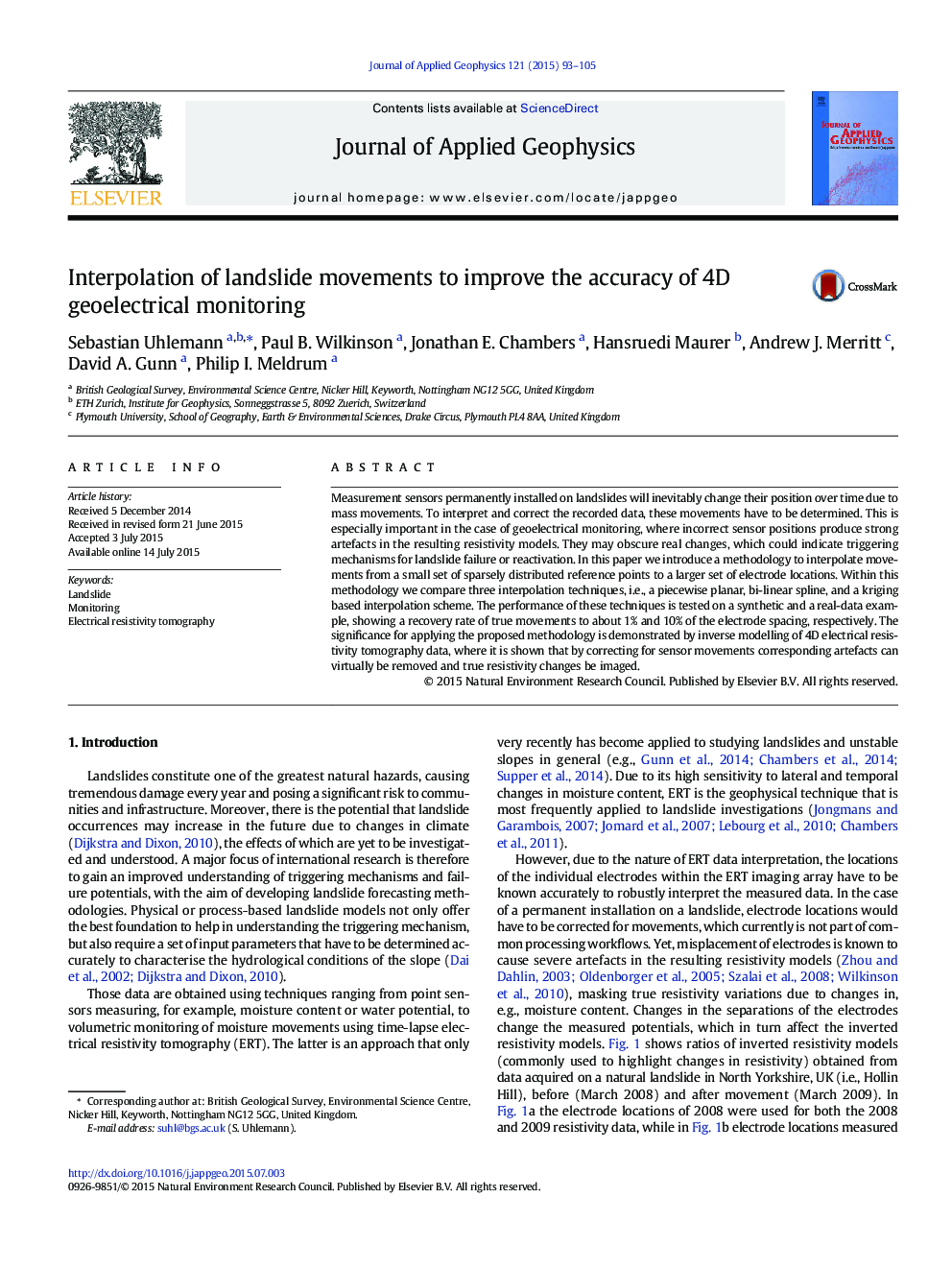| Article ID | Journal | Published Year | Pages | File Type |
|---|---|---|---|---|
| 4739886 | Journal of Applied Geophysics | 2015 | 13 Pages |
•Investigation of 3D artefacts caused by electrode misplacements•Interpolation of landslide movements to improve 4D resistivity monitoring•Comparison of interpolators regarding their suitability for landslide investigation
Measurement sensors permanently installed on landslides will inevitably change their position over time due to mass movements. To interpret and correct the recorded data, these movements have to be determined. This is especially important in the case of geoelectrical monitoring, where incorrect sensor positions produce strong artefacts in the resulting resistivity models. They may obscure real changes, which could indicate triggering mechanisms for landslide failure or reactivation. In this paper we introduce a methodology to interpolate movements from a small set of sparsely distributed reference points to a larger set of electrode locations. Within this methodology we compare three interpolation techniques, i.e., a piecewise planar, bi-linear spline, and a kriging based interpolation scheme. The performance of these techniques is tested on a synthetic and a real-data example, showing a recovery rate of true movements to about 1% and 10% of the electrode spacing, respectively. The significance for applying the proposed methodology is demonstrated by inverse modelling of 4D electrical resistivity tomography data, where it is shown that by correcting for sensor movements corresponding artefacts can virtually be removed and true resistivity changes be imaged.
